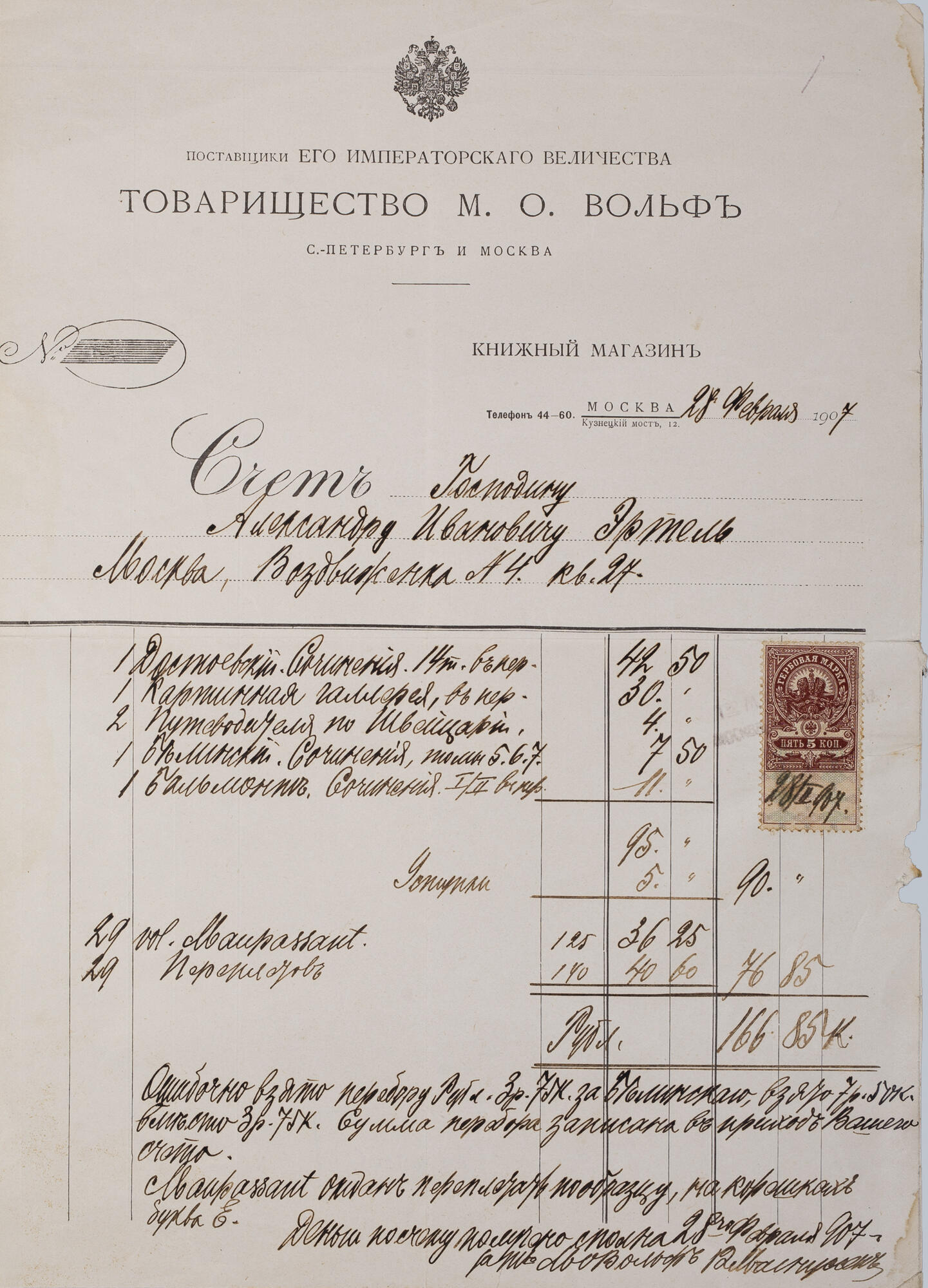In 1848, Maurycy Wolff came to Saint Petersburg, where he worked as a clerk in the bookstore of Yakov Alekseyevich Isakov; in 1853, he opened his own shop called “Universal Book Trade” and then established a publishing business.
After closely studying the readers’ preferences, he diversified the range of published books: there were editions on philosophy, pedagogy, mathematics, physics and medicine, as well as Russian and foreign fiction books.
Maurycy Wolff was among the first to take children’s literature seriously. He published children’s books in series depending on the age and interests of young readers: “Golden Library”, “Green Library”, “Pink Library”, “Russian Library”, “Moral Novels for Young People”, and others.
He collaborated with renowned Russian writers for the translation of foreign literature and its adaptation for children: for example, Nikolay Semyonovich Leskov adapted Victor Hugo’s novel “The Toilers of the Sea” and Alexander Stepanovich Afanasyev-Chuzhbinsky translated “One Thousand and One Nights”. Ivan Sergeyevich Turgenev translated a few of Charles Perrault’s fairy tales. To prepare illustrations for “Magic Tales”, Wolff bought authentic wood-engraved illustrations by Gustave Doré in Paris. The books “Uncle Tom’s Cabin” Harriet Beecher Stowe and “Gulliver’s Travels” by Jonathan Swift were adapted for children and enjoyed great popularity.
Apart from serious literature, Wolff published humorous books for children: “Styopka-Rastryopka” (a German children’s book called “Der Struwwelpeter”, roughly translated as “Slovenly Peter”), “Talking Animals” and “Masha the Day-Dreamer”. He also published an illustrated magazine for children and families called Zadushevnoe Slovo (Heartwarming Words).



